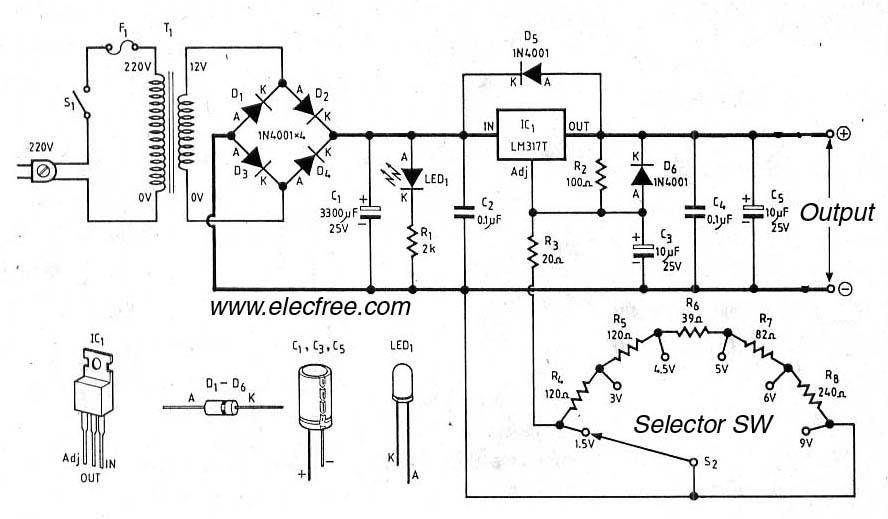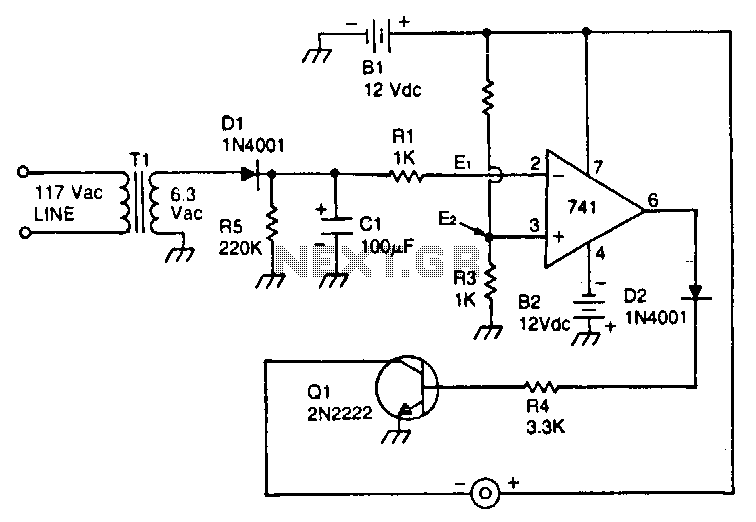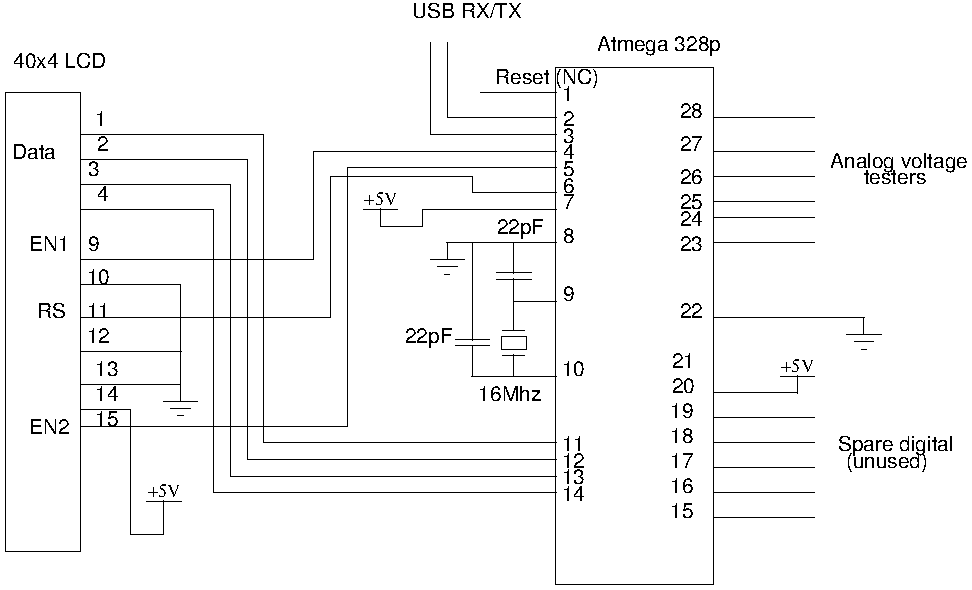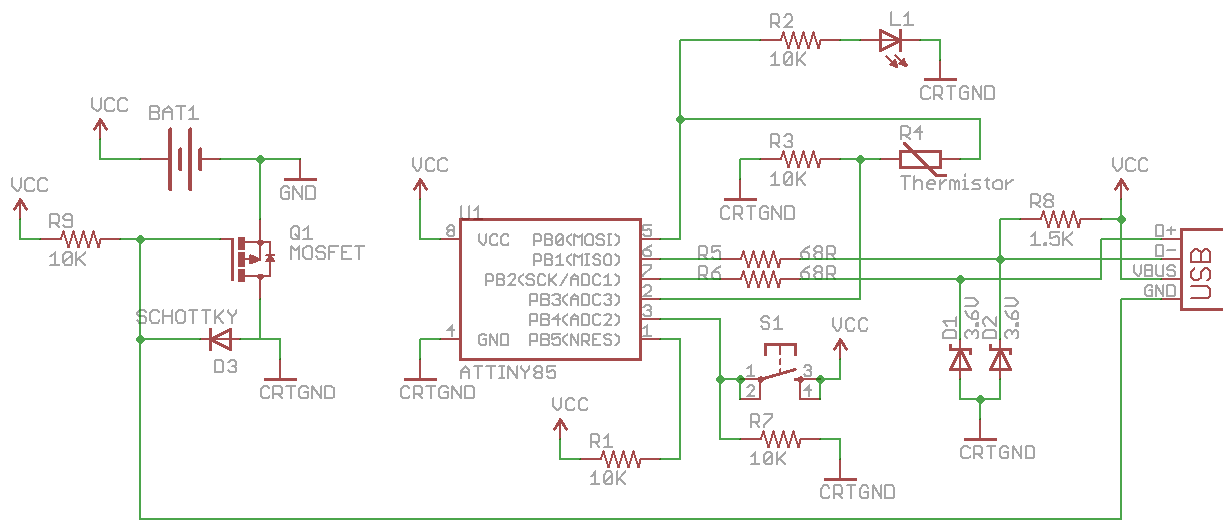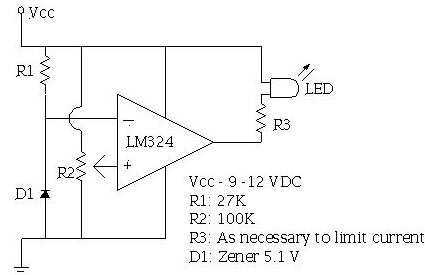
Low-Dropout (LDO) Voltage Regulator
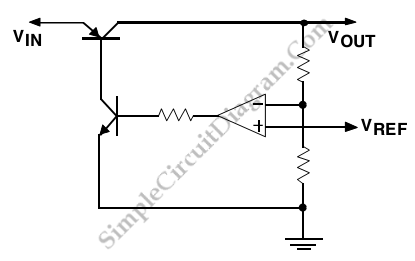
This is a low-dropout (LDO) regulator circuit, constructed using only a single PNP transistor. This circuit is directly related to load current. At very low...
The low-dropout (LDO) regulator is a crucial component in power management systems, providing a stable output voltage despite variations in input voltage and load current. This specific LDO design utilizes a single PNP transistor, which simplifies the circuit while maintaining efficiency.
In this configuration, the PNP transistor operates in the active region, allowing for a minimal voltage difference between the input and output, which is essential for low-dropout applications. The output voltage is regulated by adjusting the base current of the PNP transistor, which is influenced by the feedback from the output voltage. A resistor divider can be used to set the desired output voltage level, ensuring that the output remains stable under varying load conditions.
The circuit's performance is closely tied to the load current; as the load increases, the regulator must adjust the base current to maintain the output voltage. This characteristic makes the LDO suitable for powering sensitive electronic devices that require a stable voltage supply.
In addition to the PNP transistor, the circuit may include bypass capacitors at the input and output to filter noise and stabilize the voltage levels. The choice of these capacitors can significantly impact the transient response and overall performance of the LDO regulator, particularly during sudden changes in load.
Overall, this single PNP transistor LDO regulator design offers a compact solution for voltage regulation in various electronic applications, balancing simplicity with effective performance.This is a Low-dropout (LDO) Regulator circuit, constructed by using only a single PNP transistor. This circuit is directly related to load current. At very low.. 🔗 External reference
The low-dropout (LDO) regulator is a crucial component in power management systems, providing a stable output voltage despite variations in input voltage and load current. This specific LDO design utilizes a single PNP transistor, which simplifies the circuit while maintaining efficiency.
In this configuration, the PNP transistor operates in the active region, allowing for a minimal voltage difference between the input and output, which is essential for low-dropout applications. The output voltage is regulated by adjusting the base current of the PNP transistor, which is influenced by the feedback from the output voltage. A resistor divider can be used to set the desired output voltage level, ensuring that the output remains stable under varying load conditions.
The circuit's performance is closely tied to the load current; as the load increases, the regulator must adjust the base current to maintain the output voltage. This characteristic makes the LDO suitable for powering sensitive electronic devices that require a stable voltage supply.
In addition to the PNP transistor, the circuit may include bypass capacitors at the input and output to filter noise and stabilize the voltage levels. The choice of these capacitors can significantly impact the transient response and overall performance of the LDO regulator, particularly during sudden changes in load.
Overall, this single PNP transistor LDO regulator design offers a compact solution for voltage regulation in various electronic applications, balancing simplicity with effective performance.This is a Low-dropout (LDO) Regulator circuit, constructed by using only a single PNP transistor. This circuit is directly related to load current. At very low.. 🔗 External reference
